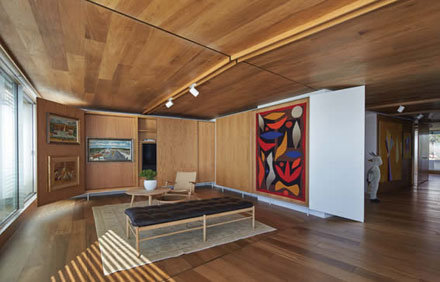
Wood continues to grow as the most loved material among Australians. In a recent survey Wood Solutions found that most Australians are likely to choose wood over other materials for various uses. Source: Architecture & Desing
Wood remains the most loved material and is unmatched on attributes relating to aesthetics and sustainability.
Wood is seen as far more natural, warm, timeless, uplifting and versatile than other materials.
Almost half of consumers love wood (47%), compared with 25% for the closest competitor (modified wood), 9% love steel, 7% aluminium and only 2% plastic.
Wood has unique characteristics and offers several environmental advantages: Wood is a renewable resource; Wood products store carbon dioxide; Comparatively, the manufacture of most wood products requires smaller amounts of energy; and Residues generated through the processing of wood can be reused in a variety of positive ways.
Choosing timber can help tackle climate change as wood stores carbon for life. Growing trees absorb carbon dioxide from the atmosphere, emit oxygen and store carbon.
Carbon remains locked in the wood for the life of the piece of timber even when it is made into a product like window or door frames.
Wood is also a natural insulator due to air pockets within its cellular structure, which means that it is 15 times better than masonry, 400 times better than steel, and 1770 times better than aluminium.
Life Cycle Analysis (LCA) is a method of measuring the environmental impacts of building products over their whole life.
The life cycle analysis of timber follows the piece of wood from harvesting, manufacture, construction and product life to recycling and disposal.
The manufacture of wood products typically requires far less energy than other materials. Embodied energy describes the energy consumed in providing materials for building construction.
It includes the extraction and processing of raw materials, along with manufacturing, transport and product delivery processes. Generally, the more highly processed a material is the higher its embodied energy.
The embodied energy of a building can be lowered by using locally available, natural materials like timber which is both durable and recyclable.
By ensuring sustainable forest practices and regenerating this natural product there are real possibilities to significantly improve the environmental credentials of the building and construction industry by choosing wood.
In Australia there are three timber certifications recognised: FSC (Forest Stewardship Council), Australian Forest Certification Scheme (AFCS), and PEFC (Program for Endorsement of Forest Certification).







